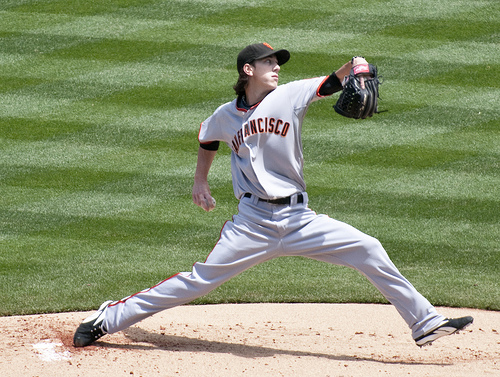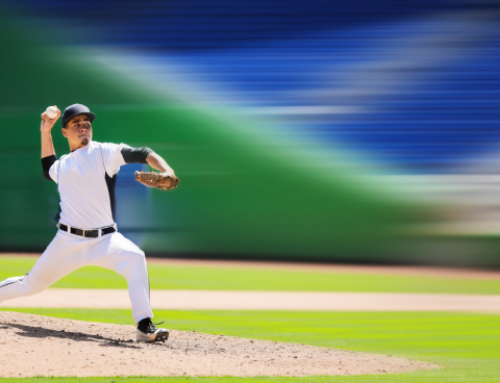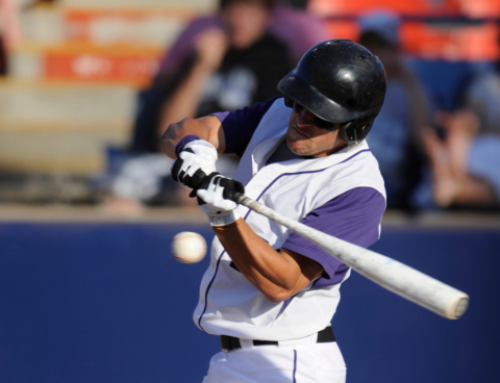Why Pitchers Must Train Anaerobically for Peak Performance
A pitcher’s windup and throw is an explosive, coordinated full-body movement. It happens in a second and is repeated constantly throughout a season. But there is nothing aerobic about it—meaning it is not of long duration and does not require great amounts of oxygen. So why train that way?
To achieve superior performance results, pitchers should perform anaerobic workouts, which require the body to use glycogen instead of oxygen to fuel its movements. Why? Because anaerobic workouts more closely relate to how pitchers move in their sport. Aerobic exercises, such as distance running, do little to directly improve pitching performance and should only be used for general fitness.
As a pitcher, you should focus on explosively training your entire posterior chain—glutes, back and hamstrings. Training these muscles for power best mimics the elastic energy generated in a pitching motion. Also, your explosive exercises should incorporate a stretch shortening cycle—an active stretch during the deceleration phase of an exercise. This will help increase your pitching velocity, because it reflects the movements made during a pitch.
The best training for baseball pitchers should incorporate the following exercises:
Plyometrics
Single-Leg Box Jump
Sets/Reps: 3x-8, each leg
Med Ball Throws
Sets/Reps: 4×8 (each side)
Sprint Repeats
Sets/Distance: 3×30 yards
Deadlift
Sets/Reps: 4×8
Alternate Single-Leg Hamstring Curl
Sets/Reps: 3×8, each leg
After you perform these exercises, make time for post-workout foam rolling. Due to the one-sided nature of the pitching motion, muscles can become asymmetrical, with one side tight and constricted. For example, a right-handed pitcher can have a tight left hip flexor and oblique. Also, a pitcher’s hamstrings can become tight and shortened over time. When the hamstrings become too tight, it can lead to a pelvic tilt and a whole litany of injuries. Foam rolling can help address these issues, so be sure to incorporate it into your training. (Learn how to perform four great foam rolling exercises.)
Photo: fantasyknuckleheads.com
Joe Lopez, CSCS, works with many different athletes at Pope John XXIII Regional High School in Sparta, N.J. His expertise is in track and field, baseball and golf. He has worked as a personal trainer for more than seven years. Follow him online at jerseystrong.wordpress.com or on Twitter.
RECOMMENDED FOR YOU
MOST POPULAR
Why Pitchers Must Train Anaerobically for Peak Performance
A pitcher’s windup and throw is an explosive, coordinated full-body movement. It happens in a second and is repeated constantly throughout a season. But there is nothing aerobic about it—meaning it is not of long duration and does not require great amounts of oxygen. So why train that way?
To achieve superior performance results, pitchers should perform anaerobic workouts, which require the body to use glycogen instead of oxygen to fuel its movements. Why? Because anaerobic workouts more closely relate to how pitchers move in their sport. Aerobic exercises, such as distance running, do little to directly improve pitching performance and should only be used for general fitness.
As a pitcher, you should focus on explosively training your entire posterior chain—glutes, back and hamstrings. Training these muscles for power best mimics the elastic energy generated in a pitching motion. Also, your explosive exercises should incorporate a stretch shortening cycle—an active stretch during the deceleration phase of an exercise. This will help increase your pitching velocity, because it reflects the movements made during a pitch.
The best training for baseball pitchers should incorporate the following exercises:
Plyometrics
Single-Leg Box Jump
Sets/Reps: 3x-8, each leg
Med Ball Throws
Sets/Reps: 4×8 (each side)
Sprint Repeats
Sets/Distance: 3×30 yards
Deadlift
Sets/Reps: 4×8
Alternate Single-Leg Hamstring Curl
Sets/Reps: 3×8, each leg
After you perform these exercises, make time for post-workout foam rolling. Due to the one-sided nature of the pitching motion, muscles can become asymmetrical, with one side tight and constricted. For example, a right-handed pitcher can have a tight left hip flexor and oblique. Also, a pitcher’s hamstrings can become tight and shortened over time. When the hamstrings become too tight, it can lead to a pelvic tilt and a whole litany of injuries. Foam rolling can help address these issues, so be sure to incorporate it into your training. (Learn how to perform four great foam rolling exercises.)
Photo: fantasyknuckleheads.com
Joe Lopez, CSCS, works with many different athletes at Pope John XXIII Regional High School in Sparta, N.J. His expertise is in track and field, baseball and golf. He has worked as a personal trainer for more than seven years. Follow him online at jerseystrong.wordpress.com or on Twitter.












